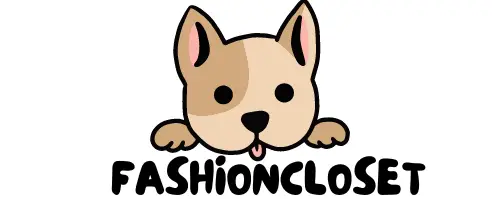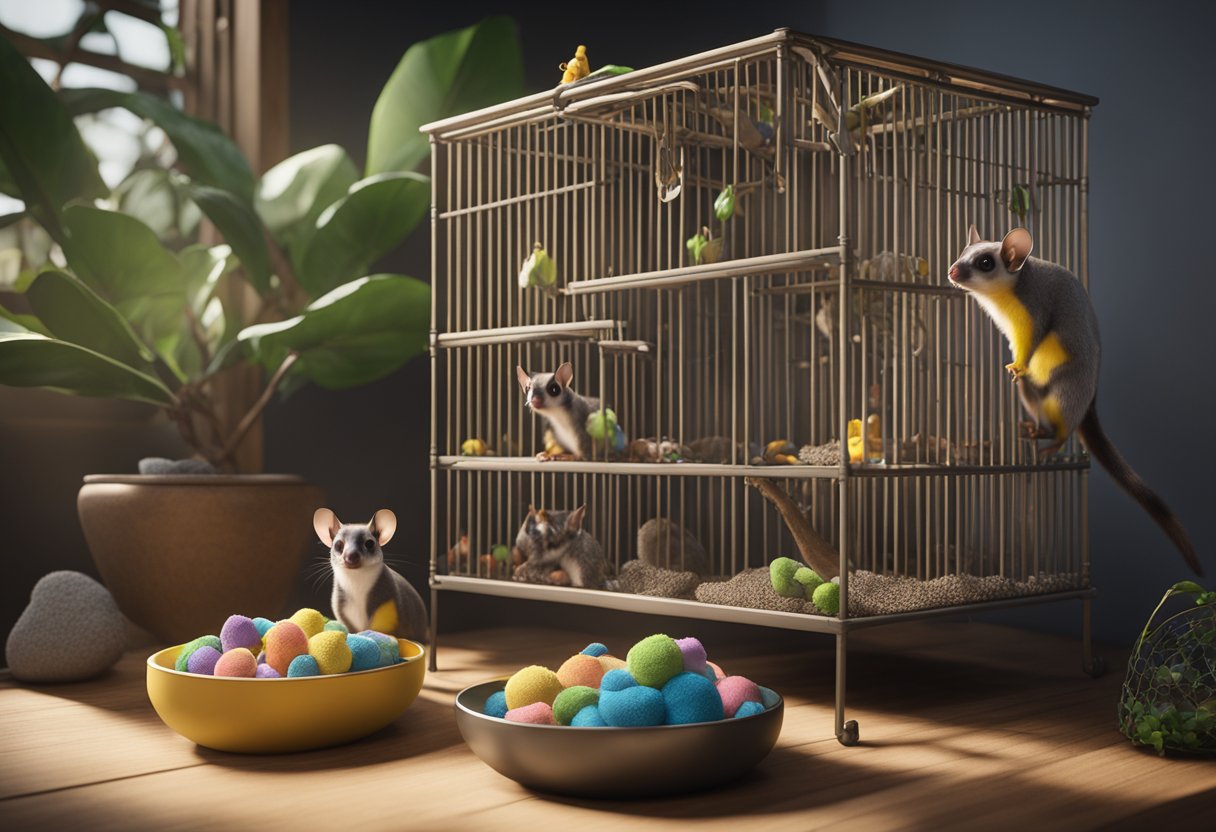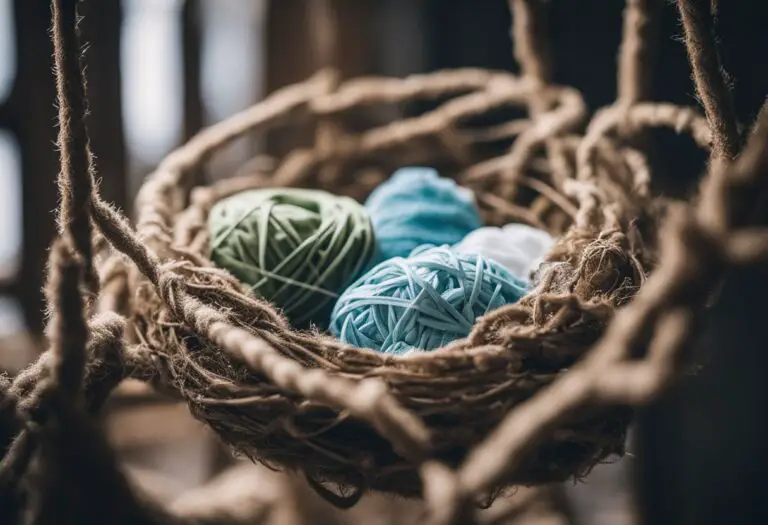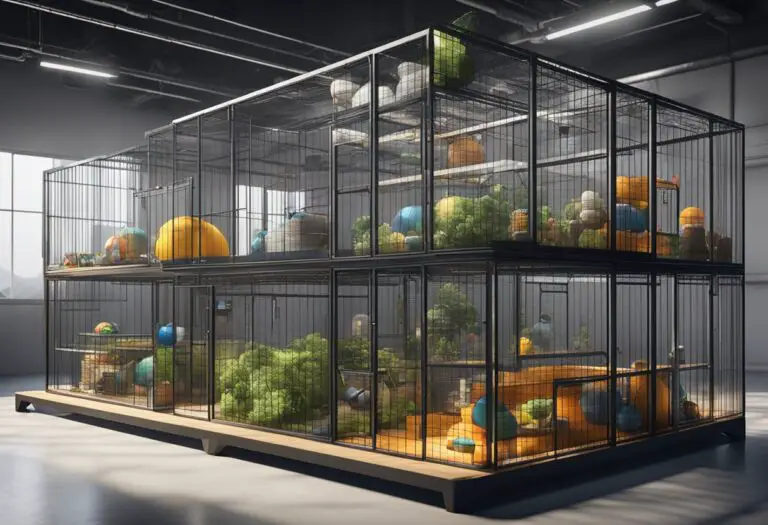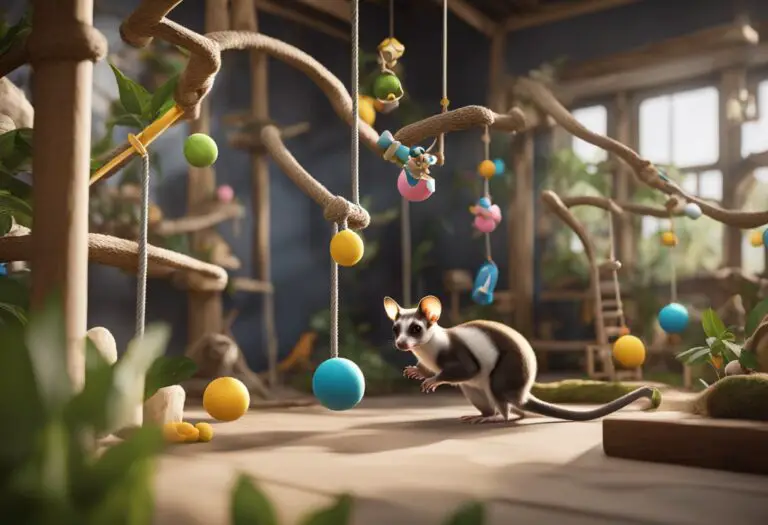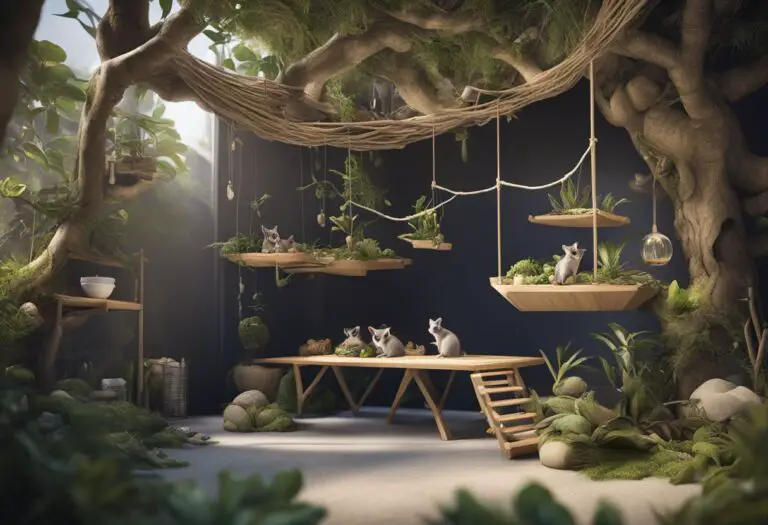10 tips for Sugar Gliders Cage Cleaning
Maintaining a clean and well-ventilated habitat is crucial for the health and well-being of your sugar gliders. These delicate creatures require a meticulously maintained environment to thrive. In this article, we’ll explore 10 comprehensive tips to help you effectively clean and maintain the cage of your sugar gliders. By following these practical guidelines, you can ensure your sugar gliders’ home remains fresh, comfortable, and free of potential health hazards.
From establishing a regular cleaning routine to utilizing sugar glider-safe cleaning products, this guide will provide you with the knowledge and tools necessary to keep your sugar gliders’ cage setup in top condition. Proper cage cleaning and enclosure sanitation not only improve the overall appearance of the habitat but also play a vital role in preventing respiratory issues, skin infections, and other health problems in your sugar gliders.
Whether you’re a new sugar glider owner or an experienced caretaker, these cage cleaning tips for sugar gliders will equip you with the essential information to maintain a sugar glider habitat that is truly clean, comfortable, and conducive to their well-being.
Understanding the Importance of Cage Cleaning
Proper sugar glider habitat maintenance is essential for the overall health and well-being of your sugar gliders. A clean living environment helps prevent the buildup of bacteria, parasites, and other harmful organisms that can lead to respiratory issues, skin infections, and other health problems in sugar gliders. Maintaining a hygienic sugar glider enclosure also reduces the risk of odors and keeps your sugar gliders’ home comfortable and inviting.
Health Benefits for Your Sugar Glider
A clean and well-maintained sugar glider nesting area is crucial for your sugar gliders’ physical and mental well-being. By ensuring their habitat is free of contaminants and odors, you can help prevent the development of various health issues, such as respiratory infections, skin irritations, and the spread of parasites. This proactive approach to sugar glider habitat maintenance can significantly improve the overall quality of life for your furry companions.
Maintaining a Hygienic Living Environment
Regular cleaning and disinfection of your sugar gliders’ cage and accessories are necessary to maintain a comfortable and inviting living space. A clean sugar glider enclosure not only promotes their health but also helps control unpleasant odors, creating a more pleasant environment for both you and your sugar gliders. By prioritizing sugar glider nesting area cleaning, you can ensure your pets thrive in a safe and hygienic habitat.
Cage Cleaning Tips for Sugar Gliders
Maintaining a clean and well-cared-for habitat is essential for the health and happiness of your sugar gliders. To keep your sugar gliders’ cage in top condition, it’s important to establish a regular cleaning routine.
Frequency of Cleaning
Experts recommend cleaning the sugar glider cage at least once a week, or more frequently if the cage becomes soiled. This helps prevent the buildup of bacteria, parasites, and other harmful organisms that can lead to respiratory issues, skin infections, and other health problems in your sugar gliders.
Supplies Needed for Effective Cleaning
Gather the necessary supplies to ensure a thorough and safe cleaning process. This includes non-toxic cleaning solutions, soft brushes, and absorbent bedding material. By using sugar glider-safe cleaning products, you can maintain a hygienic living environment for your furry friends without exposing them to potentially harmful chemicals.
| Cleaning Supplies | Importance |
|---|---|
| Non-toxic Cleaning Solutions | Ensure the safety of your sugar gliders by using only products that are specifically designed for their sensitive skin and respiratory system. |
| Soft Brushes | Gently scrub surfaces to remove built-up dirt, debris, and waste without damaging the cage or scratching your sugar gliders. |
| Absorbent Bedding Material | Replace soiled bedding regularly to maintain a dry, comfortable, and odor-free environment for your sugar gliders. |
Step-by-Step Guide to Cage Cleaning
Maintaining a clean and hygienic sugar glider enclosure is crucial for their overall health and well-being. Begin the cleaning process by removing all the bedding material and disposing of it properly. This helps eliminate any accumulated dirt, debris, or waste that could harbor harmful bacteria or parasites.
Removing and Replacing Bedding
Carefully take out the used bedding, ensuring to dispose of it in a sealed bag or container. Once the surfaces are clear, inspect the cage for any soiled areas or spots that require extra attention. Use a mild, sugar glider-safe cleaning solution to wipe down the surfaces of the cage, paying close attention to corners and crevices where dirt and waste can accumulate.
Cleaning and Disinfecting Surfaces
After thoroughly cleaning the cage, it’s important to disinfect the surfaces to maintain a hygienic sugar glider enclosure. Apply a sugar glider-safe disinfectant to the cage, making sure to cover all areas, including perches, toys, and other accessories. Allow the disinfectant to sit for the recommended duration, then wipe down the surfaces to remove any residue.
Once the cleaning and disinfecting process is complete, replace the bedding with fresh, absorbent material to create a clean and comfortable environment for your sugar gliders. Regularly following this step-by-step guide will help ensure your sugar gliders’ cage setup remains in optimal condition, promoting their overall health and well-being.
Sugar Glider Habitat Maintenance
Maintaining the cleanliness and organization of your sugar gliders’ habitat is essential for their overall health and well-being. While the main cage is the primary focus of your cleaning routine, it’s equally important to pay attention to the nesting areas and pouches within their living space.
Cleaning Nesting Areas and Pouches
Sugar gliders are known to create cozy nesting areas and use pouches for sleeping and resting. Over time, these specialized spaces can accumulate soiled bedding, droppings, and other debris. To keep these areas sugar glider nesting area cleaning and inviting, gently remove the old materials and replace them with fresh, clean bedding. This not only promotes a sugar glider habitat maintenance environment but also helps prevent the buildup of odors and potential health hazards.
When cleaning the nesting areas and pouches, be sure to use the same sugar glider-safe cleaning products and techniques as you would for the main cage. Avoid harsh chemicals or abrasive materials that could harm your sugar gliders. Gently brush or wipe down the surfaces, and take care not to disrupt the structure or arrangement of the nesting areas, as these familiar spaces are vital to your sugar gliders’ sense of security and comfort.
| Task | Frequency |
|---|---|
| Nesting Area Cleaning | Weekly or as needed |
| Pouch Cleaning | Weekly or as needed |
By maintaining the cleanliness and organization of your sugar gliders’ nesting areas and pouches, you can ensure their living environment remains hygienic, comfortable, and conducive to their natural behaviors. This proactive approach to sugar glider habitat maintenance will contribute to the overall health and well-being of your cherished pets.
Toy and Accessory Sanitation
Maintaining a clean and engaging environment for your sugar gliders extends beyond just the primary cage. It’s essential to regularly clean and disinfect the toys, perches, and other accessories found within their habitat. This not only ensures these items are free from potential contaminants but also helps create a safe and inviting space for your furry friends.
Safe Cleaning Products for Sugar Gliders
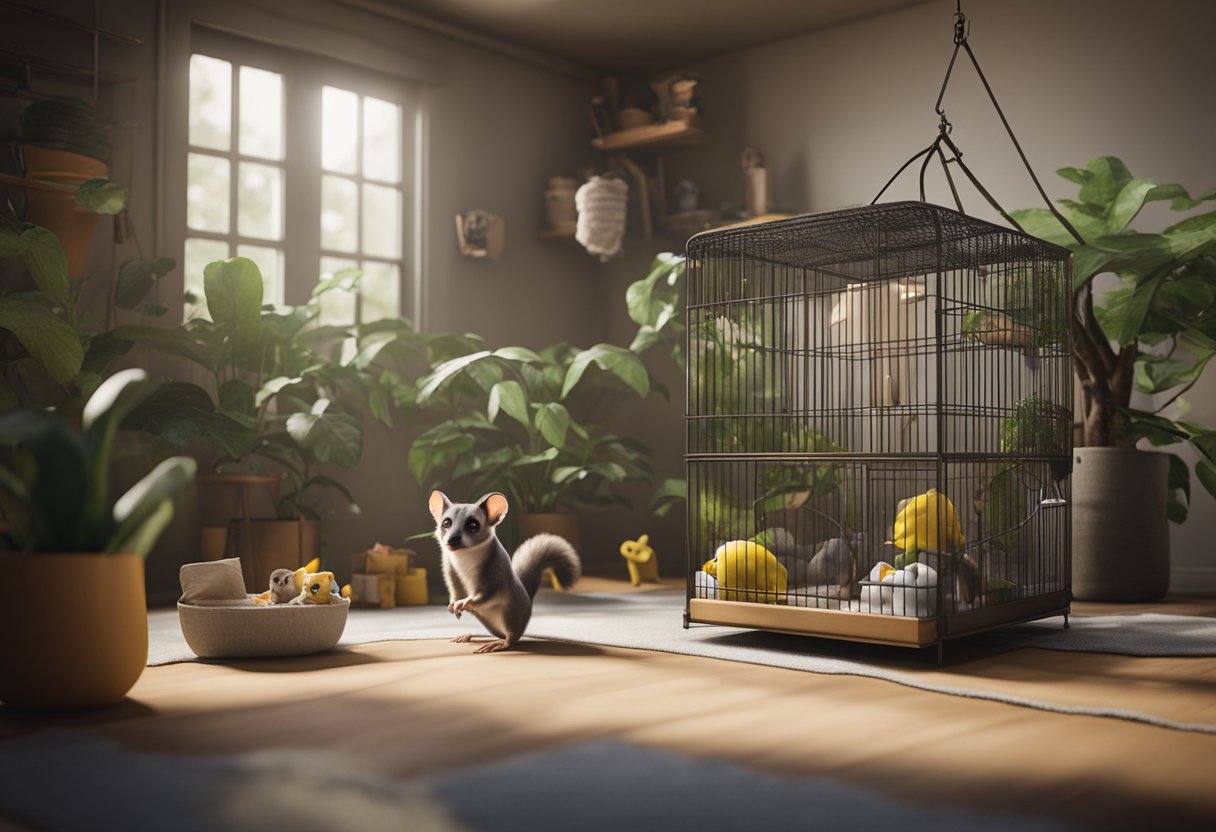
When it comes to cleaning the toys and accessories in your sugar gliders’ enclosure, it’s crucial to use only sugar glider-safe cleaning products. Harsh chemicals and strong disinfectants can be harmful to these delicate creatures, potentially causing skin irritation, respiratory issues, or even poisoning. Instead, opt for gentle, natural cleaners that are specifically formulated for use around small animals, such as vinegar-based solutions or pet-safe disinfectants.
Regularly rotating and replacing the toys in your sugar gliders’ habitat can also help keep their living space fresh and clean. Worn or damaged toys can harbor bacteria and other contaminants, so it’s important to regularly inspect and replace any items that may be compromised. By providing a variety of clean, engaging toys for your sugar gliders, you can encourage natural behaviors and maintain a hygienic environment.
Waste Removal and Odor Control
Promptly removing and disposing of your sugar gliders’ waste is crucial for maintaining a clean and fresh-smelling habitat. Carefully scoop up any sugar glider waste and use absorbent bedding materials to help control odors. You can also incorporate natural deodorizers, such as baking soda or essential oils, to keep your sugar gliders’ living space smelling clean and pleasant.
Dealing with Urine and Feces
Regularly scooping and disposing of your sugar gliders’ urine and feces is essential for preventing the buildup of unpleasant smells and potential health hazards. Use a dedicated litter box or absorbent substrate to contain the waste, and be diligent in removing soiled materials from your sugar gliders’ habitat. Properly disposing of this waste in a safe and hygienic manner will help maintain a clean and comfortable environment for your furry companions.
Natural Deodorizers for Fresh Smells
In addition to prompt sugar glider waste removal, you can use natural deodorizers to keep your sugar gliders’ habitat smelling fresh and inviting. Baking soda is an excellent, inexpensive option that can be sprinkled throughout the enclosure to absorb odors. You can also try incorporating essential oils, such as lemon, lavender, or peppermint, which can provide a pleasant, natural fragrance to the space. By combining effective odor control methods, you can ensure your sugar gliders enjoy a clean, comfortable, and fresh-smelling living environment.
Sugar Glider Cage Setup
Providing your sugar gliders with the right living environment is crucial for their overall health and well-being. The size and ventilation of their cage play a vital role in maintaining a clean and thriving habitat.
Choosing the Right Cage Size
When selecting a sugar glider cage setup, it’s important to choose a spacious enclosure that allows your sugar gliders to move and explore freely. The recommended minimum cage size is 24 inches wide, 24 inches deep, and 36 inches tall. Larger cages are even better, as they provide ample room for perches, hiding spots, and various enrichment activities.
Providing Adequate Ventilation
Proper sugar glider enclosure sanitation also requires adequate ventilation to prevent the buildup of stale air, odors, and moisture. Choose a cage with a well-designed airflow system, either through natural air circulation or a gentle, quiet fan, to ensure a constant supply of fresh air. This helps maintain a clean and healthy environment for your sugar gliders.
| Cage Size | Minimum Recommended Dimensions |
|---|---|
| Single Sugar Glider | 24 inches wide, 24 inches deep, 36 inches tall |
| Pair of Sugar Gliders | 30 inches wide, 30 inches deep, 48 inches tall |
| Group of 3-4 Sugar Gliders | 36 inches wide, 36 inches deep, 60 inches tall |
Handling and Bonding During Cleaning
When cleaning your sugar gliders’ habitat, it’s essential to handle them with care and maintain a positive bonding experience. Sugar glider habitat maintenance involves more than just keeping the enclosure clean; it’s also about fostering a trusting relationship with your pets.
Approach your sugar gliders calmly and gently during the cleaning process. Move slowly, speak softly, and avoid sudden movements that could startle them. This gentle handling helps reinforce the idea that cage cleaning is not a stressful event, but rather a necessary part of providing a healthy and comfortable home for your cherished pets.
Consider rewarding your sugar gliders with their favorite treats or playtime after the cleaning is complete. This positive reinforcement can further strengthen the bond between you and your sugar gliders, making them more comfortable and cooperative during future cleaning sessions. By prioritizing sugar glider habitat maintenance and bonding, you can ensure your sugar gliders’ living space remains clean, safe, and nurturing for their overall well-being.
Troubleshooting Common Cage Cleaning Issues
Maintaining a clean and fresh-smelling habitat for your sugar gliders is crucial for their well-being, but occasionally, you may encounter stubborn challenges during the cleaning process. From addressing persistent odors to dealing with unsightly stains and discoloration, it’s essential to be prepared with effective strategies to keep your sugar gliders’ enclosure in top condition.
Addressing Stubborn Odors
Despite your regular cleaning efforts, you may still notice lingering odors in your sugar gliders’ cage. This could be due to a buildup of urine, feces, or even food residue. To combat these stubborn sugar glider odor control issues, try incorporating natural deodorizers, such as baking soda or vinegar, into your cleaning routine. You can also experiment with sugar glider safe cleaning products that are designed to neutralize unpleasant smells without harming your pets.
Dealing with Stains and Discoloration
Over time, the surfaces in your sugar gliders’ enclosure may accumulate stains or discoloration, which can be challenging to remove. Start by carefully inspecting the affected areas and addressing the root cause, whether it’s dried-up food, urine, or other deposits. Gently scrub the surfaces with a soft-bristled brush and a sugar glider safe cleaning product to lift stubborn stains. If necessary, you may need to let the cleaning solution sit for a few minutes before wiping it away to effectively break down the residue.
Staying vigilant and proactive in your cleaning efforts is the key to maintaining a clean and inviting environment for your sugar gliders. By troubleshooting common issues and utilizing the right sugar glider odor control and sugar glider safe cleaning products, you can ensure your sugar gliders’ habitat remains fresh, comfortable, and free of potential health hazards.
Sugar Glider Enclosure Sanitation
In addition to regular cleaning, it’s essential to thoroughly disinfect your sugar gliders’ entire enclosure periodically. This is particularly crucial when introducing new sugar gliders to the habitat or if you suspect any illness or infection. By following proper quarantine and disinfection procedures, you can ensure a safe and healthy living environment for your sugar gliders.
Quarantine and Disinfection Procedures
When bringing in a new sugar glider or if you suspect any health concerns, it’s important to quarantine the new addition before introducing it to the existing enclosure. This helps prevent the spread of any potential illnesses or parasites. During the quarantine period, thoroughly clean and disinfect the entire enclosure using sugar glider safe cleaning products. Pay close attention to crevices, toys, and nesting areas to ensure all surfaces are properly sanitized.
To effectively disinfect the enclosure, consider using a diluted bleach solution or other animal-safe disinfectants. Always follow the manufacturer’s instructions and ensure proper ventilation. After disinfecting, rinse the surfaces thoroughly and allow the enclosure to dry completely before reintroducing your sugar gliders.
Maintaining a clean and sanitized sugar glider enclosure is essential for the overall health and well-being of your pets. By incorporating regular disinfection procedures, you can create a safe and inviting environment that supports your sugar gliders’ long-term happiness and vitality.
Conclusion
Maintaining a clean and well-cared-for habitat is essential for the health and happiness of your sugar gliders. By following the 10 tips outlined in this article, you can keep your sugar gliders’ living space fresh, comfortable, and free of potential hazards. Commit to a regular cage cleaning routine, use safe and effective products, and stay vigilant in addressing any issues that may arise.
With these strategies, you can provide your sugar gliders with a clean, inviting, and nurturing sugar glider habitat that supports their overall well-being. Remember, a clean and hygienic environment is crucial for preventing health problems and ensuring your sugar gliders thrive in their home.
By prioritizing proper cage cleaning and habitat maintenance, you demonstrate your commitment to the well-being of your sugar gliders. This not only benefits your pets but also allows you to enjoy a more rewarding and fulfilling experience as a responsible sugar glider owner.
